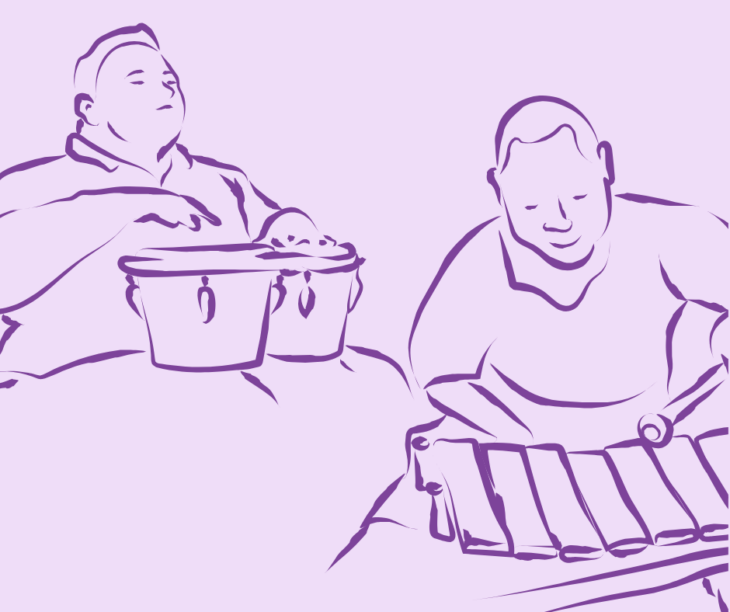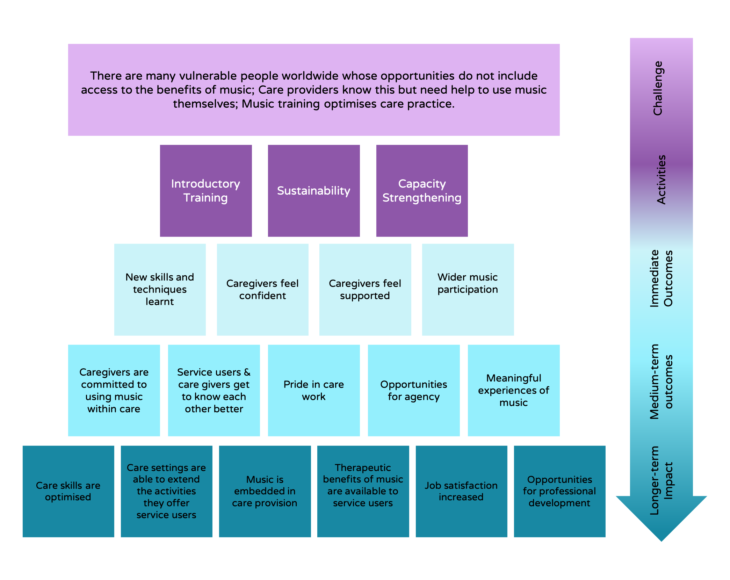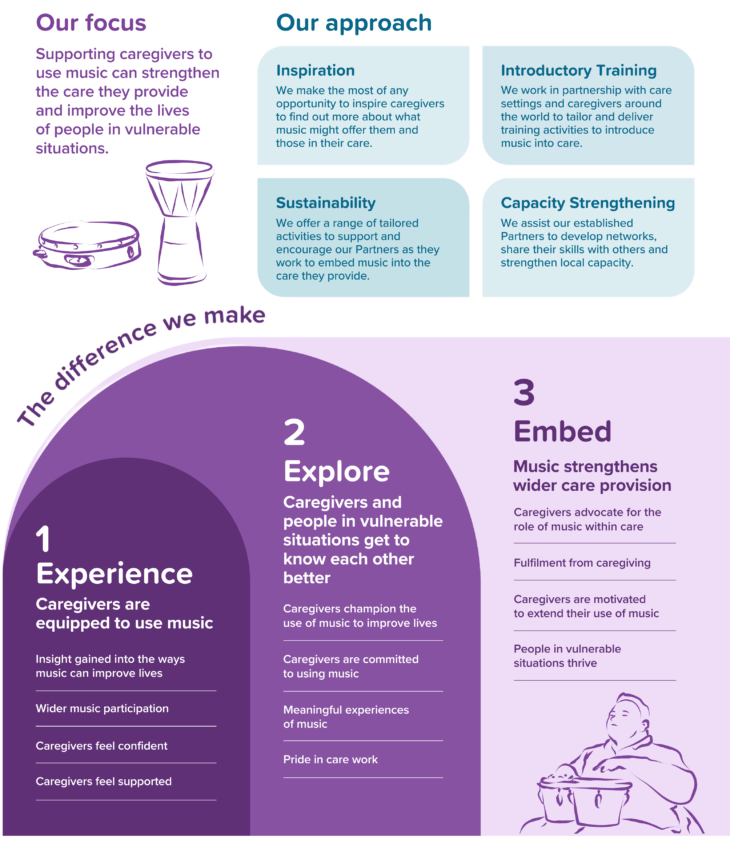Updating our Theory of Change
- Activities
- Strategy

We’ve had a Theory of Change since 2021, when we introduced it as a way to chart the anticipated outcomes and longer-term changes we expect to see from our activities, helping us to capture, monitor and communicate our impact.
Internally, we use it to evaluate the impact and success of any activity. It traces links between our goals, those of our Partners, the ways in which music is being used by all involved and the experiences for different beneficiary groups.
Externally, it helps us to communicate what we do and the difference we make in a clearer way, pinpointing key details from what our Partners tell us and report on it more precisely.

While our Theory of Change aims to reflect our current thinking and activities at any one time, it is very much a working tool. This means it needs reviewing, refining and updating as we introduce new activities, strategic goals and continually gather evidence of our impact.
It’s all change
Focusing on our impact is a key goal of our current three-year strategy, so after studiously working on this behind the scenes over the past few months, we’re excited to share with you our new and improved Theory of Change.
As you will see, the focus has been updated and refined, and it now includes ‘Inspiration‘ activities within our approach. You’ll also notice the introduction of three clear levels, or stages of using music, with Experience / Explore / Embed.
We’ve come to realise that our first version, which considered our outcomes through the lens of time, was too linear. Previously, we referred to immediate outcomes, medium-term outcomes and long-term impact, but we now realise this doesn’t fully reflect the way we work with caregivers with differing levels of understanding and music use.
Instead, this new Theory of Change focuses on the level to which music is being used and the influence it is having – regardless of how long it has been in use. It simply focuses on what’s important: the difference using music makes and how it strengthens care.
Finally, we hope you like the new look, thanks to graphic designer Abi May – we think it’s a vast improvement on our old, in-house, box-heavy attempt!
Our (updated) Theory of Change

